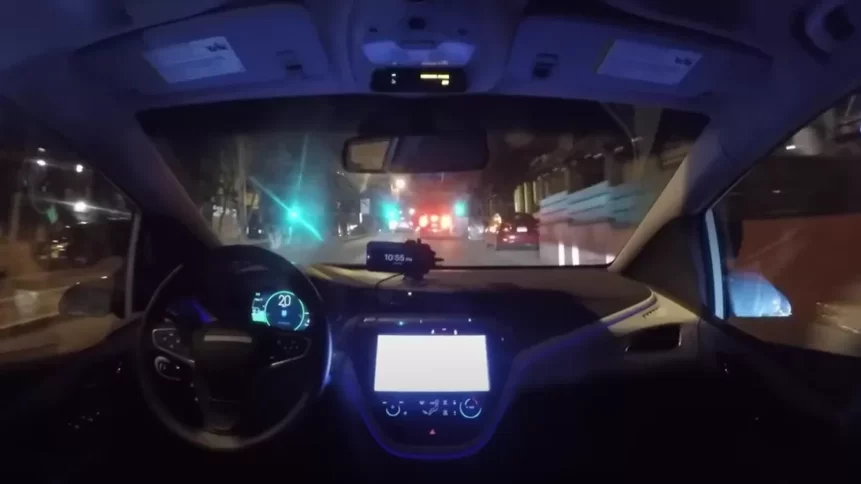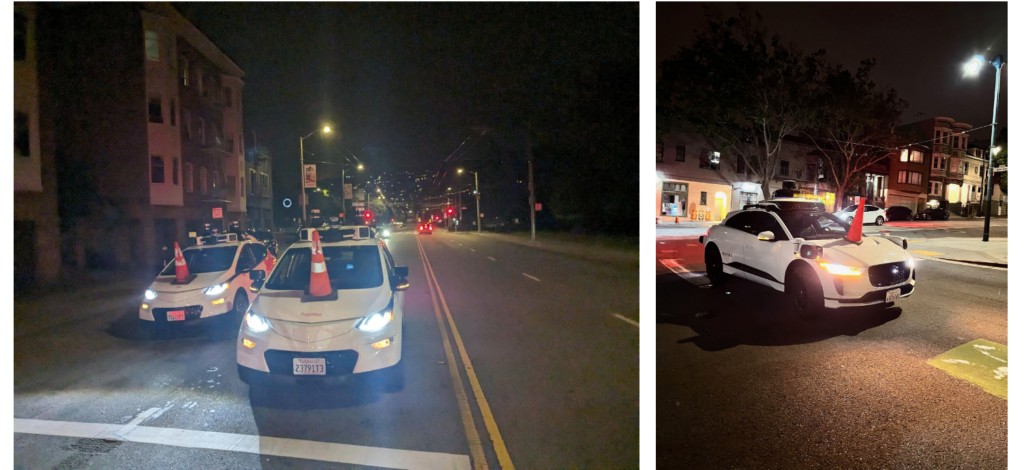Driverless just a drive by? San Franciscans remain hostile to the robotaxi

• The age of the robotaxi may not be upon us quite yet.
• San Francisco has refused to take the robotaxi to its heart.
• But while there is a chorus of disapproval, some San Franciscans appreciate the AVs.
This month, travel by robotaxi was made theoretically easier after a California regulator approved an expansion of robotaxi services in San Francisco. On August 10, the California Public Utilities Commission allowed robotaxi firms to run paid services at any time of day.
The new allowances have been afforded to Waymo, part of Alphabet, and Cruise, a unit of General Motors. Autonomous technology was developed in and around San Francisco, where self-driving vehicles are beginning to gain traction.
Driverless vehicles have traveled San Fran’s streets for some time, surrounded by cameras and sensors, gathering data. As Cruise and Waymo begin running their services in the city though, robotaxi backlash is intensifying.
Many in San Francisco think the city is taking part in a dangerous experiment, endangering lives.
Waymo is having to fight against labor unions, the public transport system, and city attorney David Chiu, who petitioned the state to suspend the expanded fare licenses.
If Chiu gets his way, companies trying to monetize their multibillion-dollar investments in self-driving cars would face a huge setback.
That’s not to say they haven’t already had a struggle to get where they are today. Cruise has battled for nine years to get 10 autonomous vehicle permits. By comparison, securing a permit in Arizona took a month and Texas offers them within days.
In Florida, Georgia, and North Carolina, the company said it doesn’t even require an autonomous vehicle permit.
The California Public Utilities Commission writes that the Autonomous Vehicle Deployment Permit “is a prerequisite for AV deployment and is distinct from the CPUC’s permit, which is an additional requirement for companies that provide transportation services to the public using AVs.”
Robotaxi transport met with hostility in San Francisco
Ahead of Patti Smith performing in San Francisco, sponsors of the event received a shoutout from the event’s emcee. One of these was Waymo – which the crowd booed.
. @Cruise driverless vehicle in front of me yesterday illegally went through a Stop sign and nearly ran over two moms and their kids. #SF pic.twitter.com/FjoFN95l7l
— enelay (@enelayy) August 14, 2023
Recently, a fleet of driverless vehicles froze and blocked traffic during a Friday night concert at North Beach. Days later, an autonomous car got stuck in wet cement at a construction site – then a robotaxi crashed into a firetruck responding to an emergency call.
Weeks before that, a vehicle hit and killed a small dog.
The concept of a driverless vehicle has always raised concern, and the slew of news stories reporting preventable accidents has added to anti-robotaxi feeling. San Francisco fire chief, Jeanine Nicholson, is one of the most outspoken critics of driverless vehicles.
San Francisco is already difficult for fire trucks to manoeuver in; during an emergency, response times really matter. Garbage disposal trucks have also found their routes blocked by robotaxis.
“Every time something happens with a Cruise vehicle, they come out with their PR folks and take zero responsibility,” the Japan Times reported. “We need them to come to the table and admit there are challenges and issues, and work with us to solve them.”
In the city’s attorney petition, Chiu said the fire department reported around 60 cases of driverless cars interfering with its work since April 2022. He gave examples of Waymo and Cruise cars causing problems, including an incident on August 5th when a Waymo car entered an active firefighting scene, obstructing firefighters as they were trying to extinguish a burning car.
That being said, plenty of headlines posted to social media have needed contextualizing.

Two separate, misleading newstories about robotaxis.
Driverless vehicles driven further afield
The difficulties that big companies like Cruise and Waymo are facing might indicate to other technology companies that San Francisco is too hostile to the tech to be a valuable site.
This puts California in a precarious position. As autonomous tech companies branch out – Cruise and Waymo are expanding operations and test fleets in Sunbelt states with more permissive regulations and business-friendly governments – banking and tech companies are also being pushed out by high tax and regulations.
On Tuesday last week, Cruise announced expansion plans for Raleigh, North Carolina.
“What isn’t getting harder in California?” said Christopher West, founder of L5AutoUSA, which promotes autonomous vehicles. “This is accelerating a natural progression to other cities and states.”
Initially, Cruise had 400 vehicles on the city’s roads, but after a spate of recent incidents circulated social media the California Department of Motor Vehicles ordered Cruise to cut its active fleet by half. The ompany can now only operate 50 driverless cars during the day and 150 at night – a move supported by Teamsters Union Local 250.
Waymo has around 250 vehicles on the roads of the city.
Neither company has reported a fatal crash in their cars, and rider demand is already greater than the supply of robotaxis. Cruise and Waymo both say there are waiting lists to use their services.
As well as safety concerns, there are worries from the city about losing transit riders and fare revenue to driverless cars. The San Francisco Municipal Transportation Agency has resisted giving permits to competitors like Cruise and Waymo, while blaming Uber Technologies and Lyft for adding to traffic congestion and pollution.
A campaign group has formed against the robotaxis, “coning” AVs to disable them. Safe Street Rebel puts traffic cones on the bonnets – some of their videos have gone viral.

“With just a traffic cone and an empty robotaxi, anyone can create a unicorn and temporary traffic calming!” via ConeSF.
Matthew Sutter, a cab driver in San Francisco, said: “I’m all about technology, but it’s not ready, guys… this is a danger to the citizens of San Francisco.”
Some people with disabilities have also queried how driverless vehicles will accommodate them. Without assistance from a driver, getting in and out of vehicles will be more difficult.
Mara Math, a member of the Paratransit Coordinating Council, said the embrace of robotaxis would “leave disabled San Franciscans out in the cold.”
However, there are those who think driverless vehicles are preferable transport. Jessie Wolinksy, who’s blind, said she’s been harassed by Uber and Lyft drivers – Waymo cars had “provided me with a level of safety that I’ve never experienced before.”
Workers who need additional transport options are also among those who see a benefit to robotaxis.
The Service Employees International Union, National Federation of the Blind, and International Brotherhood of Electrical Workers Local 6 are among the organizations that have supported the expansion of autonomous vehicles.
George Janku, an orthopaedic surgeon in San Francisco and keen cyclist, said: “I see how these cars behave, and I trust them much more than angry drivers or distracted drivers.” He added that he had worked on many serious injuries involving human drivers – and that robotaxis appear to be safer.
Looking forward, the expansion of robotaxi companies into new states and cities will signal to San Franciscans whether AVs can be trusted. For now, pending a slew of AV-related accidents across America, autonomous vehicles are here to stay.











